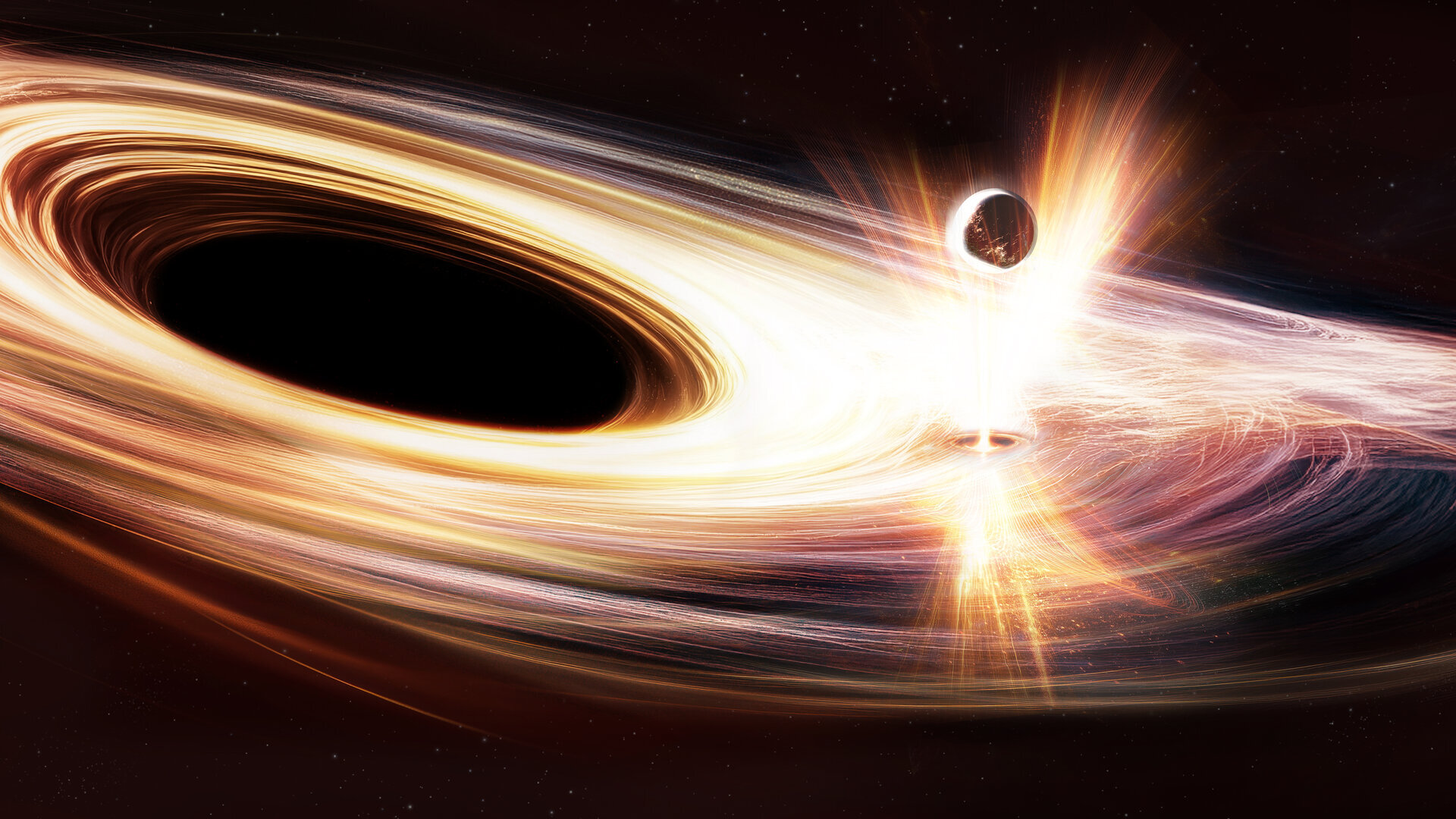12.04.2025

Although we know that supermassive black holes (millions of times the mass of our Sun) lurk at the centre of most galaxies, their very nature makes them difficult to spot and study. In contrast to the popular idea of black holes constantly ‘gobbling up’ matter, these gravitational monsters can spend long periods of time in a dormant, inactive phase.
This was true of the black hole at the heart of SDSS1335+0728, a distant and unremarkable galaxy 300 million light-years away in the constellation of Virgo. After being inactive for decades, it suddenly lit up and recently began producing unprecedented flashes of X-ray light.
The first signs of activity appeared in late 2019, when the galaxy unexpectedly began shining brightly, attracting the attention of astronomers. After studying it for several years, they concluded that the unusual changes they saw were probably the result of the black hole suddenly ‘switching on’ – entering an active phase. The bright, compact, central region of the galaxy is now classified as an active galactic nucleus, nicknamed ‘Ansky’.
“When we first saw Ansky light up in optical images, we triggered follow-up observations using NASA’s Swift X-ray space telescope, and we checked archived data from the eROSITA X-ray telescope, but at the time we didn’t see any evidence of X-ray emissions,” says Paula Sánchez Sáez, a researcher at the European Southern Observatory, Germany, and leader of the team that first explored the black hole’s activation.
Ansky wakes up

Then, in February 2024, a team led by Lorena Hernández-García, a researcher at the Valparaiso University, Chile, began to see bursts of X-rays from Ansky at nearly regular intervals.
“This rare event provides an opportunity for astronomers to observe a black hole’s behaviour in real time, using X-ray space telescopes XMM-Newton and NASA’s NICER, Chandra and Swift. This phenomenon is known as a quasiperiodic eruption, or QPE. QPEs are short-lived flaring events. And this is the first time we have observed such an event in a black hole that seems to be waking up,” explains Lorena.
“The first QPE episode was discovered in 2019, and since then we’ve only detected a handful more. We don’t yet understand what causes them. Studying Ansky will help us to better understand black holes and how they evolve.”
“XMM-Newton played a pivotal role in our study. It is the only X-ray telescope sensitive enough to detect the fainter X-ray background light between the bursts. With XMM-Newton we could measure how dim Ansky gets, which enabled us to calculate how much energy Ansky releases when it lights up and starts flashing.”
Unravelling puzzling behaviour

The gravity of a black hole captures matter that gets too close and can rip it apart. The matter from a captured star, for example, would be spread into a hot, bright, rapidly spinning disc called an accretion disc. Current thinking is that QPEs are caused by an object (that could be a star or a small black hole) interacting with this accretion disc and they have been linked to the destruction of a star. But there is no evidence that Ansky has destroyed a star.
The extraordinary characteristics of Ansky’s recurring bursts prompted the research team to consider other possibilities. The accretion disc could be formed by gas captured by the black hole from its neighbourhood, and not a disintegrated star. In this scenario, the X-ray flares would be coming from highly energetic shocks in the disc, provoked by a small celestial object travelling through and disrupting the orbiting material, repeatedly.
“The bursts of X-rays from Ansky are ten times longer and ten times more luminous than what we see from a typical QPE,” says Joheen Chakraborty, a team member and PhD student at the Massachusetts Institute of Technology, USA.
“Each of these eruptions is releasing a hundred times more energy than we have seen elsewhere. Ansky’s eruptions also show the longest cadence ever observed, of about 4.5 days. This pushes our models to their limits and challenges our existing ideas about how these X-ray flashes are being generated.”
Watching a black hole in action
Being able to watch Ansky evolving in real time is an unprecedented opportunity for astronomers to learn more about black holes and the energetic events they power.
“For QPEs, we’re still at the point where we have more models than data, and we need more observations to understand what's happening,” says ESA Research Fellow and X-ray astronomer, Erwan Quintin.
“We thought that QPEs were the result of small celestial objects being captured by much larger ones and spiralling down towards them. Ansky’s eruptions seem to be telling us a different story. These repetitive bursts are also likely associated with gravitational waves that ESA’s future mission LISA might be able to catch.”
“It’s crucial to have these X-ray observations that will complement the gravitational wave data and help us solve the puzzling behaviour of massive black holes.”

